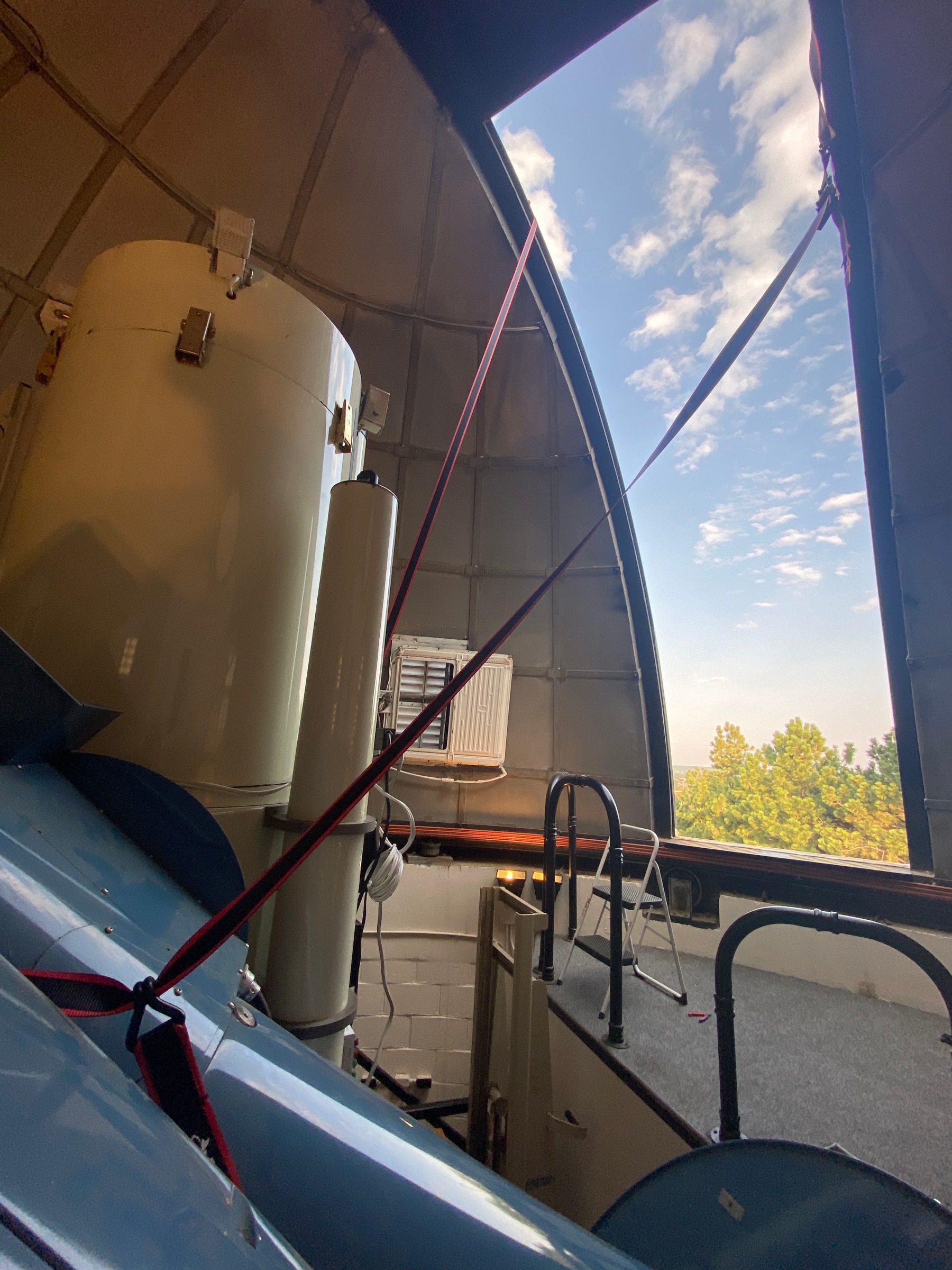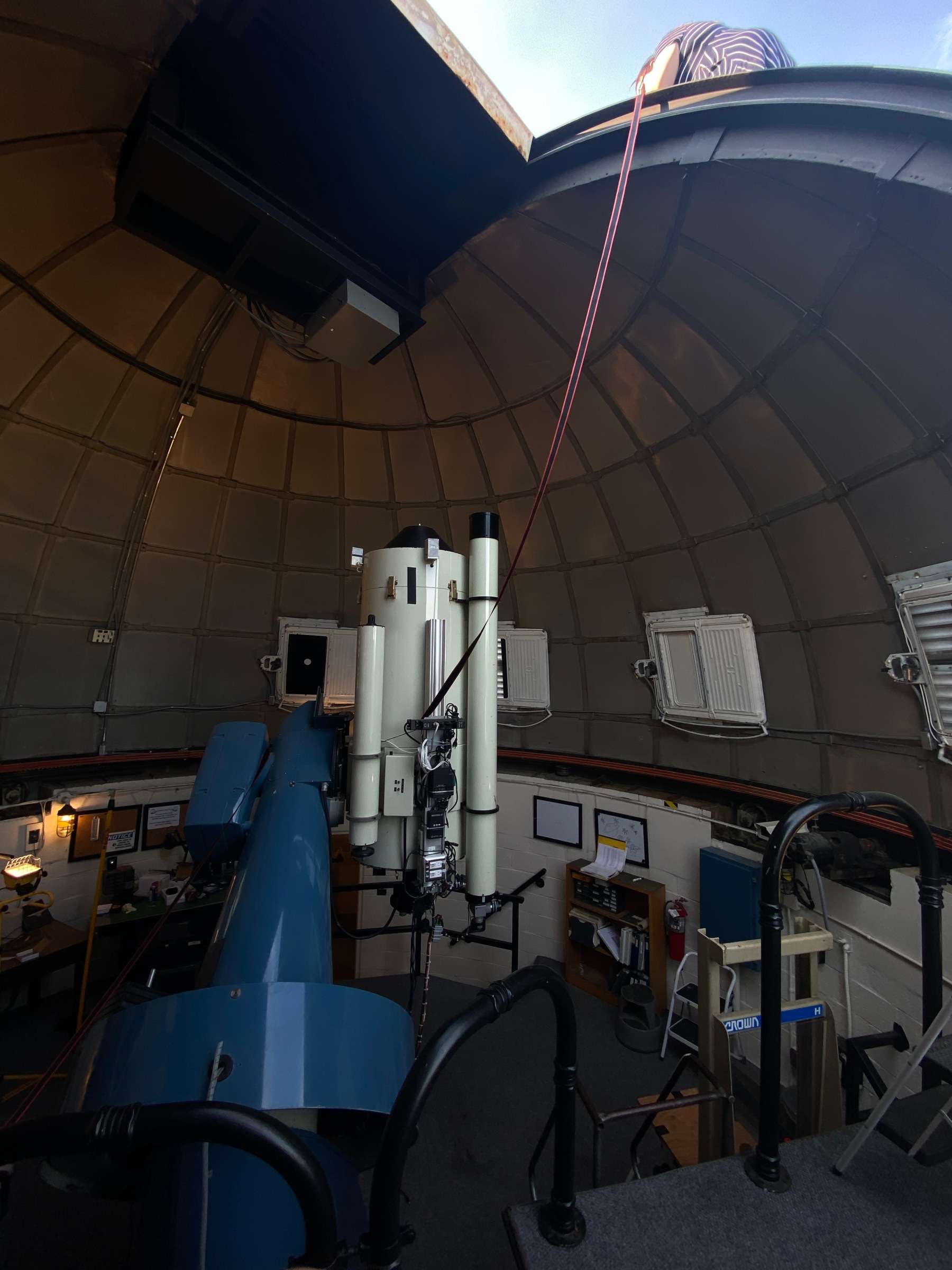Hi again! This is Cutler checking in again from Boulder here in Colorado! For the past month, I have been working with Dmitry, my mentor at LASP: the Laboratory for Atmospheric and Space Physics. Dmitry now will only be a part of my internship through the computer as he is having his firstborn in the next few days!!
This week consisted of myself and a few other grad students being trained on how to run the Sommers-Bausch Observatory. This involves everything from turning on the power to various parts and electrical systems inside the observatory to actually going inside a control room and learning how to use the software to move the telescope to where we need it when we are capturing photos of objects in the night sky. We were taught how to do all of this by the two people who run the observatory, Rose and Seth. They showed us how to focus the telescope and use a program to be able to lock it in on any object in the night sky with a click of a button in the control room. Seth mentioned the location of the observatory is actually kind of poor(not even due to the light pollution from Boulder and Denver) but because we are on the west side of the mountains to the east of us, and that causes a lot of turbulence in the air in the atmosphere between the stars and our telescope. Making focusing much harder.
This past Saturday, I came into the observatory with just Rose(the official manager of the observatory) to correctly counter-weight the telescope so we could start taking photos with it soon. The 24-inch telescope that we are using is about a little over half a ton, or 1000 pounds. It is mounted on a large contraption called an equatorial mount which guides it to the earths rotation so that a star or object will stay in the frame of the camera no matter what time of the night. A large piece of a camera on the side of the telescope was recently taken off of the telescope, so it needed to be counter-weighted again to be able to run properly. Think of it like this, if you have just a 1000 pound telescope on one side of the mount, the mount will have to strain itself extremely to lift these 1000 pounds in whatever direction you need to point the telescope, but if you put another 1000 pounds of just weight on the other side of the telescope, then theoretically, the mount would only have the strain of about 50 pounds or less, which takes much less energy to move and has a lot less of strain on the equatorial mount. This was a very insane experience, as it is kind of nerve-racking to have to balance a 1000 pound telescope that only has two straps connected to the ceiling of the observatory supporting it.
That’s all for this week, can’t wait to update everyone with the progress we make by next!



Amazing equipment!